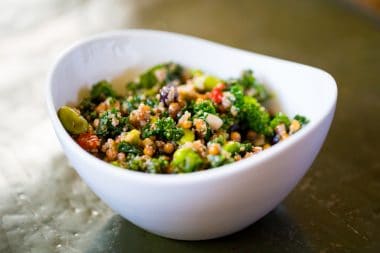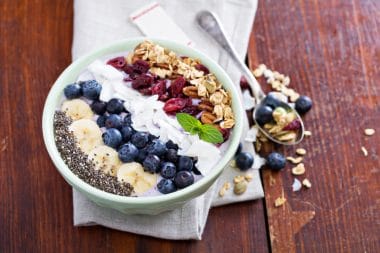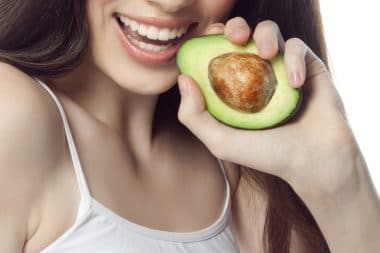It is so exciting to watch your little baby grow up. One of the big milestones you get to experience with your little one is starting solid foods. There are a few different ways to come about solid foods with your little one. You can start with solids any time between 4-6 months usually. Make sure you don’t start too early though because it can cause your child to be more susceptible to food allergies.Â
There are some things you want to look for to make sure your baby is ready for. Your baby will need to be able to hold his or her head up on their own, and open their mouths when food is brought towards. These are two signs that your baby is ready to start experiencing with solid foods.Â
How To Start
There are a few different approaches that you can do. One is to start your baby on baby cereal, oatmeal, or rice food to start. This is a good place to start to see if your baby is ready for food, and it is very basic so not to cause any allergic reactions. You will mix the cereal or oatmeal with either formula or breast milk to get it to the consistency that you like. First foods should be watery so they are easier to swallow for your baby. If your baby pushes the food out right away it may mean it is too early to try food. A baby has to learn how to push food to the back of their throats. They have a tongue thrust movement that may cause them not to be ready for food. Do not get frustrated though. Keep trying a little bit each day to try and get your baby ready to eat. When you first start foods, make sure you have at least three days between your new foods. This way you can keep track of what your baby has had in case there is an allergic reaction.Â
Purees and Other Foods
After your baby masters the cereal and oatmeal you can start with other purees. Sometimes it will take your baby a bit to get used to a new food. Sometimes up to 15 days for them to accept new food. The important thing here is to make sure you don’t get frustrated. Keep offering them the food, don’t give it a one time go and give up this will not keep them well rounded in their food choices.Â
Another helpful thing to do is to start with vegetables first. This is because fruits are very sweet and tasty, so your child may prefer them more. If you already establish like with the vegetables it won’t be so hard to get them to like them after the fruits. Good first vegetables to try are sweet potatoes, carrots, green beans, and butternut squash. Fruits to move on to after vegetables are bananas, apples, peaches, pears, and avocado. You can either opt to make your own purees at home or buy from the store.Â
If you are making purees at home just know that because they don’t have any extra preservatives in them they will not last as long as store bought baby food. But purees made at home allow you to know exactly what you are giving your baby, and you can always freeze the purees and unfreeze when needed. As your baby gets older and gets good at swallowing foods you can thicken the consistency. Â
Finger Foods
Some people opt to skip the puree part of feeding altogether and go straight into finger foods around the 6-7 month age. Your baby will be ready for finger foods when they can sit up on their own, and bring their hands to their mouths. You will want to start giving them pieces of soft, easy to swallow foods so that they can’t choke. Since your baby may have one tooth or no teeth you still will want to get foods that they can mash with their tongue and the roof of their mouth. Some good choices would be pieces of a banana, watermelon, water type crackers that easily melt in the mouth, baby puffs, scrambled eggs, well cooked pasta, well cooked potatoes, or peas.Â
Diaper Expectations
With the wonderfulness of food your baby’s poo will change. Do not freak out, it will become thicker, way more smelly, and can even change color depending on what food they have eaten. So if your baby has had green beans, don’t worry if their poo then is a little green. Once you start introducing these solid foods you can add in a little bit of water. Just remember that no matter what stage of food you are in formula, or breast milk needs to be the main supply of nutrition. Â
Foods To Stay Away From
Foods to stay away from are cows milk, honey, or foods that pose a choking hazard. This can include hot dogs, grapes, cheese, and raw veggies. The hot dogs and grapes have that hard outer layer that can be difficult for babies to mash enough to swallow without harm. Â
Allergic Reactions
If you suspect that your child has an allergic reaction to a food there are a few symptoms. Not all of these symptoms though can be an allergic reaction. Gassiness, nausea, vomiting, diarrhea, mucus in their poo, runny nose, watery eyes, and wheezing are all symptoms of an allergic reaction. If you do think your child is having an allergic reaction to a food, stop feeding them that food immediately. Wait to see if the symptoms go away after stopping the food. You can wait a little bit after the symptoms have stopped and try the food again or you can speak with your doctor. Â
Make Mealtime Enjoyable
Here are some helpful tips to make your baby enjoy meal time:Â
- Encourage family meals, this helps your baby know that it is time to sit down altogether and eat.Â
- Also encourage a good variety of foods. Once you go through single foods and make sure your baby doesn’t have a bad reaction to any you can start mixing foods. Your creativity is your limit of what foods you can mix together for your baby.Â
- Before you start trying to feed your baby make sure they are in the mood to eat. Your baby may not be too keen on eating if they are too sleepy or not hungry.Â
- Make sure when you sit down to eat you aren’t rushed. Your baby may want to take their time and have a peaceful meal, the worst thing you can do is be in a hurry. It will just lead to frustration for you and your baby.Â
- Next tip is to not get frustrated. If your baby rejects a food the first time you offer it to them don’t get discouraged. It can sometimes take a baby up to three times to offer food to actually eat something.Â
- Be prepared for as much food to go into the mouth to come right back out when you are first starting foods. If your baby wrinkles their nose at a food that doesn’t mean they don’t like it. It means that they are still trying to figure the food out. Stay with it.Â
- If your baby rejects a food after a few tries this may mean they aren’t hungry. Don’t force a feeding.Â
- Also if you are making your own food, or giving your baby finger foods don’t spice up the food. Plain and bland is what your baby will be experiencing for their first foods. Â
Conclusion
Starting solid foods is a very exciting milestone for your baby. Don’t forget that formula or breast milk should be their main source of nutrition. Start off slow with one meal a day and work up to two or more meals as they get used to eating. Be patient and have fun with your baby discovering new foods. If you opt to skip the purees and go straight to the baby led weaning that is a great option too. Don’t wait too long though to start your baby on food, otherwise it may cause them to not want to eat solid foods, try new foods, and struggle swallowing foods. Speak with your doctor if you have any questions about starting your baby on solid foods.Â
Â
First foods should be watery so they are easier to swallow for your baby. #HealthStatus
If your baby wrinkles their nose at a food that doesn’t mean they don’t like it. It means that they are still trying to figure the food out.Â
Sources:
https://www.whattoexpect.com/first-year/feeding-baby/introducing-solid-foods/
https://www.parentingscience.com/how-to-start-babies-on-solid-food.html
https://www.healthychildren.org/English/ages-stages/baby/feeding-nutrition/Pages/Starting-Solid-Foods.aspx#:~:text=One%20way%20to%20make%20eating,when%20she%20is%20very%20hungry
https://www.mayoclinic.org/healthy-lifestyle/infant-and-toddler-health/in-depth/healthy-baby/art-20046200








Reply